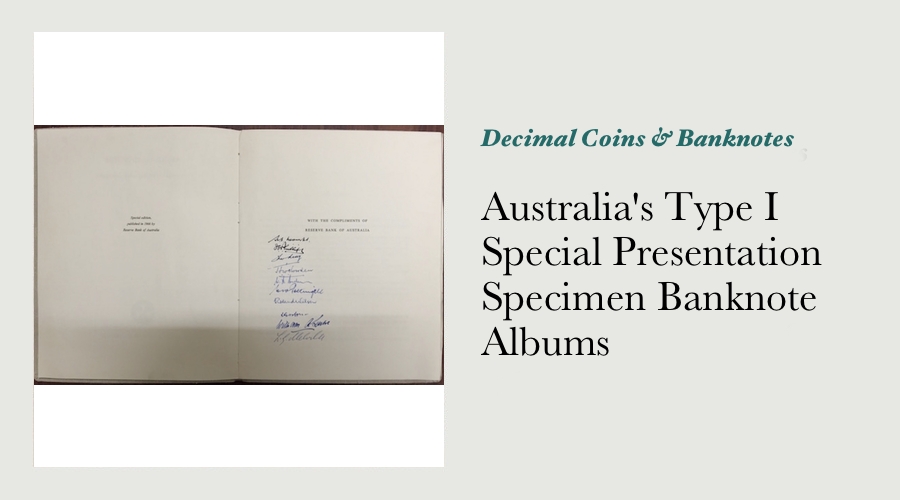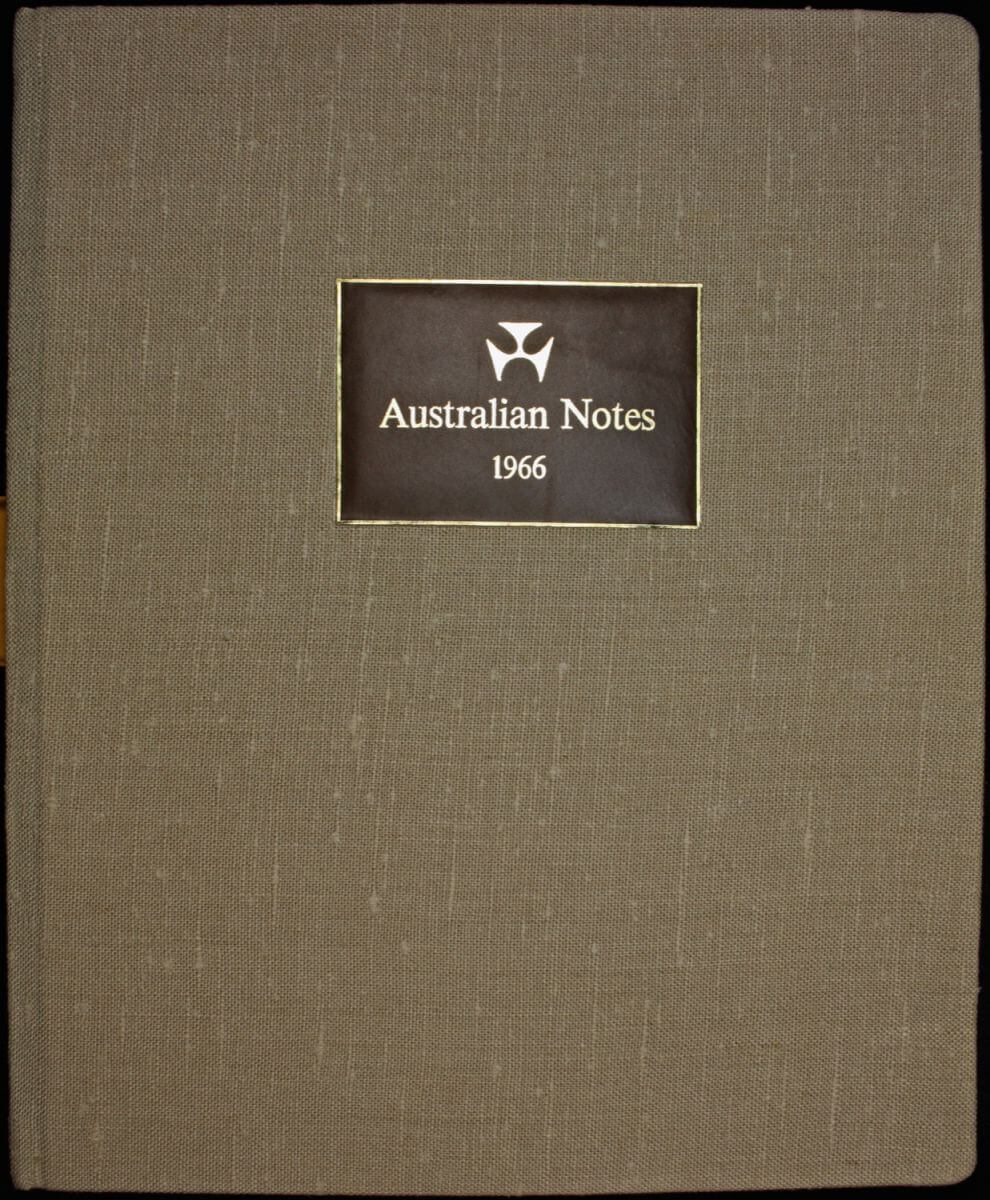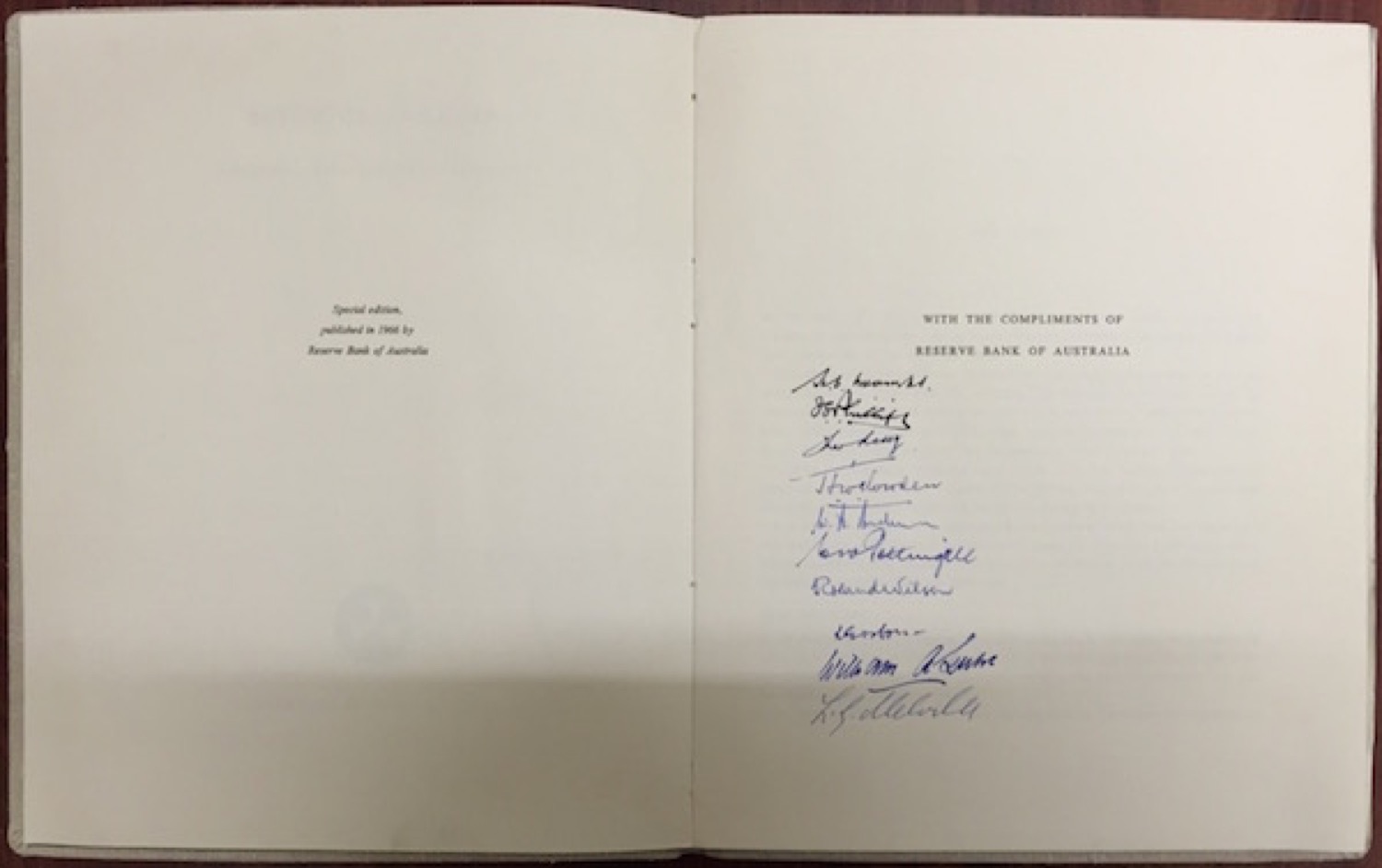Australia's Type I Special Presentation Specimen Banknote Albums

Specimen banknotes are a specific type of banknote produced by issuing authorities around the world whenever there is a significant change to a nation's legal tender.
Well before the first print run of notes intended for circulation is commenced, a very small batch of notes is printed and marked with a special printed or perforated cancellation of some sort – these notes are then retained and distributed for archival, communication or presentation purposes.
It has been standard practice for the the Reserve Bank of Australia (RBA) to keep a certain number of these specimen notes for Australia's National Currency Museum in Martin Place (Sydney, NSW).
The main focus of this museum is to showcase each major change to Australia's circulating legal tender, the entire display is solely comprised of specimen banknotes.
Archives
Specimen banknotes are distributed to other organizations for archival and record purposes, either within or outside Australia. Specimen banknotes are held by the Australian National Archives in Canberra, as well as other public institutions around the country and overseas. Such notes are very seldom on display to the general public.
Communication
Specimen banknotes perform a vital role in informing senior figures in central banks around the world of changes to the designs on Australia's circulating legal tender notes. More importantly, such notes are also used in informing staff in the Australian retail banking sector of changes to Australia's legal tender notes.
Presentation
Finally, Australian specimen banknotes have also been presented to “a very restricted list of prominent persons.”
Such prominent persons can include heads of state; the nation's most senior politicians and public servants; the artists and others closely involved with the design of the notes; members of the design advisory panel; members of the Reserve Bank Board as well as other senior public servants at the Reserve Bank.

The 1966 Type I Specimen Banknote Special Presentation Albums
To mark the introduction of Australia's new decimal currency notes in 1966, the RBA prepared a special album that included two examples of each of the new denominations, as well as information on their design and production. It is known that 17 albums were personally named for the recipient and signed by the Goveror of the Reserve Bank, and were presented to:
●The Queen
●The Duke of Edinburgh
●The Governor General, Lord Casey
●The Governor General's Wife, Mrs Casey
●The Prime Minister, Sir Robert Menzies
●The Federal Treasurer, William McMahon
●The Secretary to the Treasury, Sir Roland Wilson
●President of the Senate, Sir Alister McMullin
●Speaker in the House of Representatives, Sir John McLeay
●Leader of the Opposition, Arthur Calwell
●The Governor of the Bank of England (Retired), Lord Cromer
●The Governor of the Bank of England, Lord Cobbold
●The Governor of the Reserve Bank of New Zealand, Gilbert Wilson
●Artist Alister Morrison
●Artist Gordon Andrews
●Artist Russell Drysdale

Standard Presentation Albums
An additional 235 albums were printed in exactly the same style, although they were not signed by the Governor of the Reserve Bank of Australia.
191 of these albums were actually distributed, to the following people and organizations:
●The Governor of the Reserve Bank, Sir Herbert “Nugget” Coombs
●The Deputy Governor of the Reserve Bank
●Sir Roland Wilson
●Reserve Bank Board Members
●Members of the Design Panel
●Major Trading, State, Savings & Foreign Banks
●Commonwealth Central Banks
●Other Central Banks
●Libraries & other institutions in Australia & overseas
●High Commissioner in London
●People and Organizations on the General Manager's list (mostly printers and overseas banks)
●Reserve Bank Archivist
●Retired Treasury officials
●Mr E. Kingsford Smith
With these figures, we can see that a total of 208 “Type I” specimen banknote albums (17+191) were distributed.
Type I Specimen Banknote Cancellations
These notes are referred to as “Type I” specimen banknotes, due to the manner in which the notes were cancelled. If we presume that albums distributed to public collections will never be available to the collector market, it seems that at most, only 86 Type I Specimen note sets will ever be available to collectors.
When the paper $5 note was first issued in 1967, a sheet holding two specimen notes with the Type I cancellation were distributed to recipients of the Type I specimen note sets.
When the paper $50 ntoes were first issued in 1973, a sheet holding two specimen $50 notes with the Type III cancellation were also distributed to recipients of the Type I specimen note sets.
Type I Specimen note sets are traded on the collector market without the two $5 notes or $50 notes in them, so it appears that lesser numbers of the $5 and $50 notes were distributed.
Specimen banknotes are of great interest to collectors for the following reasons:
●They are directly linked to one of the most important events in Australia’s numismatic history;
●They are excessively rare;
●They are printed before the commercial print run for the general public;
●They were generally presented to a “very restricted list of prominent persons”;
●They are housed in a special presentation album.